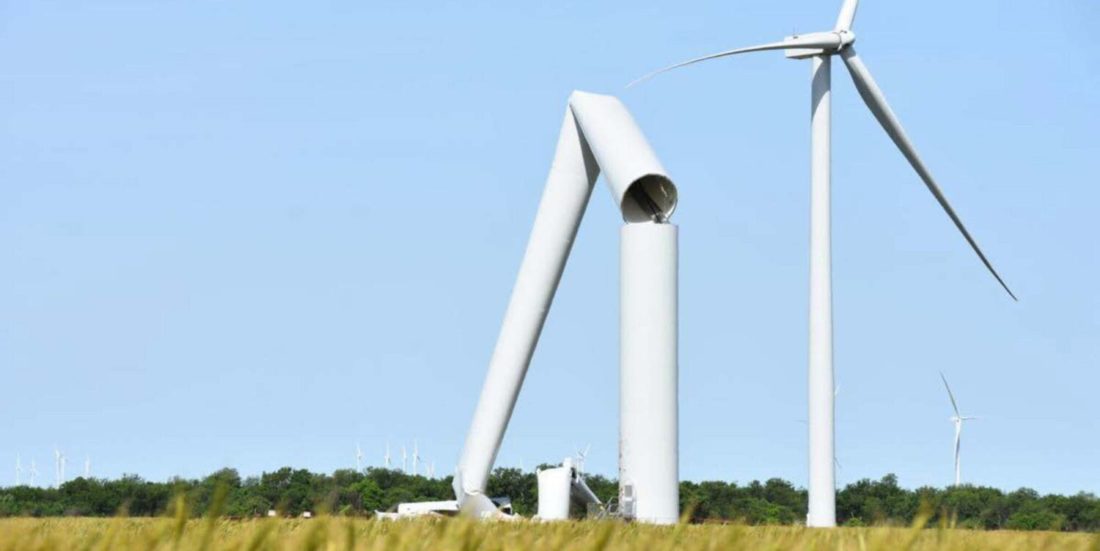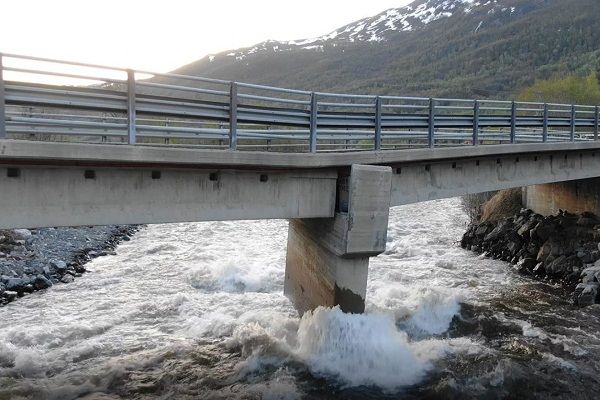Ships, bridges and wind turbines can all be made safe using sensors that are just a few millimetres across. Researchers have borrowed the principle behind the technology from a vibrating guitar string.
Research scientist Guido Sordo compares the technology with a guitar string. But whereas the string has to vibrate at a given frequency to give precisely the right tone, oscillations in the sensor will vary depending on the behaviour of the structure to which it is attached. These variations can provide warnings that something is wrong.
In this way it is possible for the sensor to identify structural overloading, material defects and maintenance needs – before major failures occur.
Sordo is a researcher at SINTEF Digital where he is working with entirely new types of sensors that can be used to help protect our larger constructions and buildings.
The Badderen bridge in Nord-Troms county is a good example of a structure that could have benefited from the use of just such a sensor. When the bridge collapsed last summer, traffic had to be directed via a 600-kilometre diversion. Clearly such failures can result in major costs in time and money.

It isn’t often that things go so wrong as to cause the collapse of a wind turbine. However, new sensors can be used to identify defects and ensure that such events are even rarer. “Most big problems start as small ones”, says SINTEF researcher Guido Sordo.
Predictive maintenance
“The failure of just a single structure can turn out to be very expensive”, says Sordo. “This is why it is vital to monitor our constructions. This can be achieved by attaching sensors to structures such as bridges, mechanical components or ships. These sensors can then monitor how the various structures behave”, he explains.
It is very rare that things go completely wrong. You don’t often see bridges and wind turbines so badly damaged that they collapse.
“The sensors we develop are designed primarily to optimise maintenance routines and reduce maintenance costs”, says Sordo. “Problems are identified at an early stage and it becomes much easier to predict what has to be done and when you have to do it”, he says.
This enables operators to carry out what is called ‘predictive maintenance’, that is, maintenance performed exactly when it is needed.
“Most big problems start as small ones.
An inexpensive technology
There is a wide variety of different sensors that can be attached to buildings and other structures for monitoring purposes.
“There are many inexpensive sensors on the market, but it is easy to buy cheaply at the cost of accuracy and stability over time”, says Sordo. “Some exhibit excellent levels of performance, but these can be extremely complicated and expensive to manufacture. Our aim is to develop a sensor that compares with the best available, but at a much lower cost”, he says.
“Our focus is on mechanical stress monitoring”, says Sordo. “Oscillation of the sensor varies in response to small movements of the structure, indicating exactly what is likely to happen”, he says.
Vacuum guarantees accuracy
The sensor itself is tiny, containing a filament just one millimetre in length. The technology is called MEMS, which stands for ‘Microelectromechanical systems’.
In our case, the system is so ‘micro’ that the entire sensor dimensions are only three by three millimetres, and just a quarter of a millimetre thick.
“Up to now there have been larger sensors on the market containing comparable oscillating filaments”, says Sordo. “We have utilised technology previously developed at SINTEF to shrink sensor dimensions and improve its performance. When packaged in a vacuum it becomes stable, accurate and requires very little energy”, he explains.
From research to product
Evidence that the sensor works was assembled last year, just one year after Sordo launched the project, but a great deal of testing and development still remains to be done before it can be put on the market.
The researchers are now planning to test the sensor under harsher conditions outside the laboratory, most likely in maritime settings.
Guido Sordo is now in the progress of obtaining financing and gathering together a research team. He presented his work in June last year at the Norwegian conference ‘The Sensor Decade’, where he experienced high levels of interest in the sensor and the measurements it can perform.
“The conference serves to build bridges between the research and business sectors”, says Sordo. “We are currently working on this project alone, but in the future we will be looking to invite partners to participate in this research”, he says.
Source: norwegianscitech










